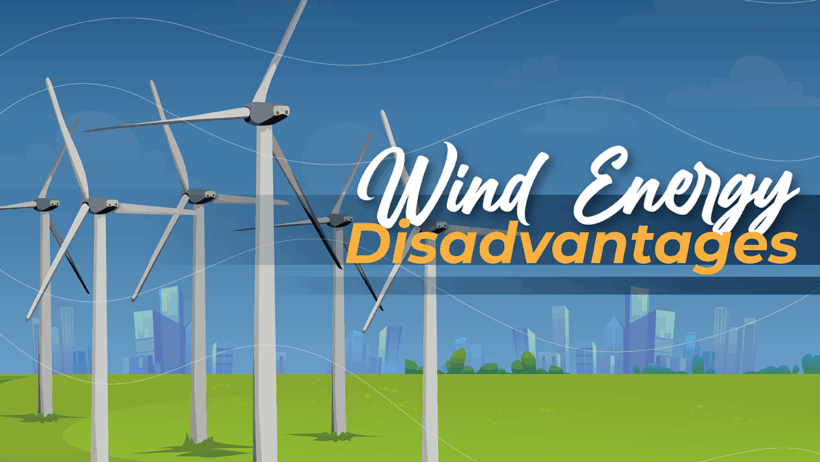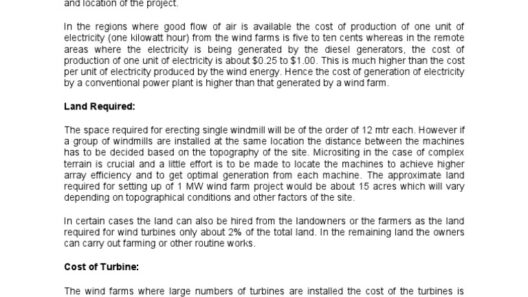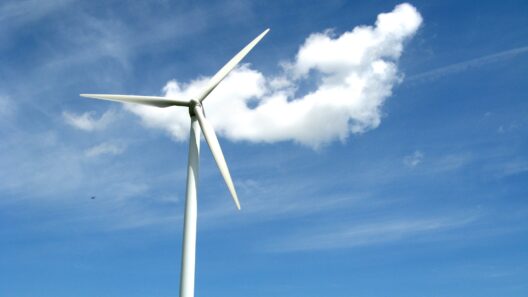Wind energy has emerged as a prominent player in the global energy transition, promising to provide a sustainable and renewable alternative to fossil fuels. However, while it is heralded for its numerous benefits, such as reduced greenhouse gas emissions and decreased reliance on nonrenewable resources, the implementation of wind energy comes with its own set of notable disadvantages. Understanding these drawbacks is crucial for a balanced view of this renewable energy source.
As the demand for clean energy intensifies, it is easy to overlook the complexities associated with wind power. This examination of wind energy’s shortcomings not only invites a critical perspective but also sparks curiosity about the future of energy generation as we explore viable solutions to mitigate these issues.
Understanding the environmental and social implications associated with the establishment of wind farms can illuminate the path forward in harnessing wind energy more effectively.
Inconsistent Energy Production: The Challenge of Reliability
One of the most significant drawbacks of wind energy is its inherent intermittency and unpredictability. Wind does not blow consistently; it can vary greatly both day and night and from season to season. This variability makes wind energy less reliable compared to traditional sources like coal or natural gas, which can produce energy continuously as needed.
This inconsistency poses challenges for energy grids that require a stable and predictable energy supply. Utilities often need to maintain backup power sources, which can negate some of the environmental benefits of wind power. Technological advancements such as energy storage systems and smart grid technologies are being developed to mitigate this issue, yet it remains a fundamental drawback in current applications.
Location Limitations: Finding the Perfect Spot
Another significant disadvantage is the geographical constraint imposed by suitable wind conditions. Ideal locations for wind farms are often remote and may not align with population centers where energy demand is highest. This can necessitate extensive infrastructure development, including transmission lines over long distances, which can increase costs and lead to more environmental disruptions.
Moreover, not all regions are equally suitable for wind energy generation. Areas with consistent, strong winds are limited, which can significantly restrict the potential for widespread adoption of wind energy. Some regions may not have the ideal wind farm sites, and this can create inequities in energy availability across different geographical areas, impacting energy equity and accessibility.
Ecological Impact and Wildlife Concerns: A Delicate Balance
The installation and operation of wind turbines can have adverse effects on local ecosystems and wildlife. Research has shown that birds, bats, and other flying creatures are particularly vulnerable to wind turbines. Collisions can result in significant fatalities, raising concerns about the broader ecological impact on local species and habitats.
The land use required for wind farms can also lead to habitat destruction and fragmentation. Although wind farms can coexist with certain agricultural practices, the large swathes of land they require can disrupt local wildlife patterns and degrade ecosystems. This reality compels a deeper examination of wind power’s role alongside other renewable energy sources, prompting discussions about the best practices for wildlife preservation while maximizing clean energy production.
Noisy Neighbors: The Sound of Wind Energy
While often overlooked, the noise generated by wind turbines can elicit a range of responses from nearby residents. The whoosh of blades slicing through the air and the hum of machinery can be an unsettling presence, especially for those living in close proximity to wind farms. Increased noise pollution can contribute to sleep disturbances and decreased quality of life, leading to local opposition against wind energy projects.
This tension between the push for renewable energy and the concerns of local communities is a critical issue that must be navigated thoughtfully. Striking a balance between expanding wind energy usage and addressing community grievances is essential for fostering public acceptance and ensuring that the transition to renewable energy does not come at the expense of local livelihoods.
Economic Factors: The High Cost of Wind Energy
The initial investment in wind power technology can be substantial. The manufacturing, transportation, and installation of wind turbines represent significant capital expenditures, and the return on investment can sometimes take years to materialize. This front-loaded cost can deter some investors and slow the widespread adoption of wind energy.
Furthermore, while the operational costs of wind energy tend to be lower than those of fossil fuels in the long run, the reliance on financial incentives, such as tax credits and subsidies, can create instability in the market. These economic factors underline the need for a comprehensive and stable policy framework to support the growth of the wind energy sector while minimizing the financial burden on both producers and consumers.
Conclusion: The Path Forward
While wind energy presents an array of benefits in reducing carbon footprints and fostering sustainability, the challenges it faces cannot be overlooked. The disadvantages of wind power, ranging from intermittent energy production to ecological impacts and community concerns, require a thoughtful and informed approach. The potential of wind energy to contribute to a greener future rests upon acknowledging these shortcomings and actively seeking solutions to mitigate them.
As society continues to explore and invest in renewable energy sources, the conversation surrounding wind energy must evolve beyond its promise. In doing so, we can pave the way for advancements that honor both environmental imperatives and the well-being of local communities, creating a more sustainable and equitable energy future for all.







